We often want individual regression equations in ggplot facets. The best way to do this is build the labels in a dataframe and then add them manually. But what if the labels contain plotmath, e.g., superscripts?
Asked
Active
Viewed 70 times
1 Answers
0
Here is a way to do it. The plotmath is converted to a string and then parsed by ggplot. The test_eqn function is taken from another Stackoverflow post, I'll link it when I find it again. Sorry about that.
library(ggplot2)
library(dplyr)
test_eqn <- function(y, x){
m <- lm(log(y) ~ log(x)) # fit y = a * x ^ b in log space
p <- exp(predict(m)) # model prediction of y
eq <- substitute(expression(Y==a~X^~b),
list(
a = format(unname(exp(coef(m)[1])), digits = 3),
b = format(unname(coef(m)[2]), digits = 3)
))
list(eq = as.character(eq)[2], pred = p)
}
set.seed(123)
x <- runif(20)
y <- runif(20)
test_eqn(x,y)$eq
#> [1] "Y == \"0.57\" ~ X^~\"0.413\""
data <- data.frame(x = x,
y = y,
f = sample(c("A","B"), 20, replace = TRUE)) %>%
group_by(f) %>%
mutate(
label = test_eqn(y,x)$eq, # add label
labelx = mean(x),
labely = mean(y),
pred = test_eqn(y,x)$pred # add prediction
)
# plot fits (use slice(1) to avoid multiple copies of labels)
ggplot(data) +
geom_point(aes(x = x, y = y)) +
geom_line(aes(x = x, y = pred), colour = "red") +
geom_text(data = slice(data, 1), aes(x = labelx, y = labely, label = label), parse = TRUE) +
facet_wrap("f")
 Created on 2021-10-20 by the reprex package (v2.0.1)
Created on 2021-10-20 by the reprex package (v2.0.1)
Simon Woodward
- 1,946
- 1
- 16
- 24